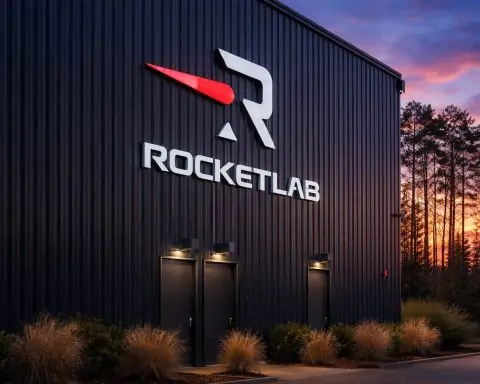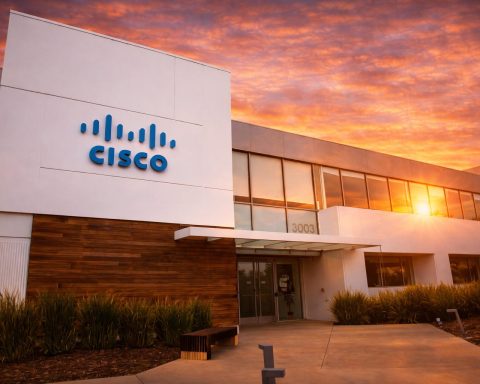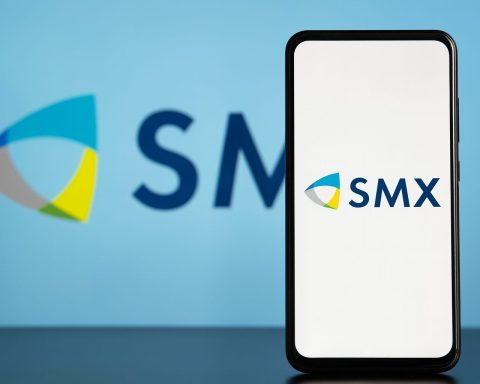Groundbreaking Quantum Research and Breakthroughs
- Harnessing Hybrid Systems: A new method to control hybrid quantum systems was demonstrated, as researchers in New Zealand and Austria showed that energy loss in a cavity magnonic system can be turned into a feature rather than a bug [1]. By operating at an exceptional point, they coherently controlled magnon-polaritons (hybrid magnon-photon quasiparticles), a technique published in Nature Physics. This “highly controllable” hybrid platform could pave the way for quantum computing, sensing, and networks by preparing quantum states more effectively [2]. Next step: the team plans to extend this method into the fully quantum regime, hinting at new tools for future quantum technologies.
- Proteins as Living Qubits: In a Nature paper, University of Chicago scientists turned a common fluorescent protein into a working qubit, bridging quantum tech with biology [3] [4]. They showed that enhanced yellow fluorescent protein (EYFP) can function as an optically addressable spin qubit – not only in purified form but even inside live mammalian and bacterial cells [5]. The protein qubits exhibited measurable coherence times and could be manipulated and read out via light and microwaves, proving quantum behavior can survive the noisy environment of living cells [6]. While less sensitive than diamond-based sensors, this breakthrough introduces a genetically encodable quantum sensor platform for nanoscale imaging and biosensing. Expert take: “Harnessing nature to create powerful families of quantum sensors—that’s the new direction here,” said Prof. David Awschalom, co-principal investigator, emphasizing how this opens the door to quantum biology and new quantum sensing techniques in living systems [7].
- Stabilizing Qubits with Magnetism: A team from Chalmers University (Sweden) and Aalto University (Finland) unveiled a strategy to protect fragile qubits using magnetism, potentially cracking quantum computing’s biggest stability problem [8]. By engineering an exotic quantum material with built-in topological protections, they created robust quantum states naturally resilient to disturbances [9] [10]. Unlike traditional approaches relying on rare spin-orbit coupling, this method harnesses common magnetic interactions to achieve topological qubit states [11]. Published in Physical Review Letters, the material maintained quantum properties despite external noise – “a completely new type of exotic quantum material that can maintain its quantum properties when exposed to disturbances,” explained lead author Guangze Chen [12]. This topologically protected approach, combined with a new computational tool to hunt for similar materials, could accelerate progress toward fault-tolerant quantum computers by embedding error-resilience directly into qubit hardware [13] [14].
Quantum Computing Security and Cryptography Updates
- Microsoft’s Post-Quantum Push: Microsoft announced a comprehensive roadmap to confront the looming threat of quantum decryption. The tech giant’s new Quantum Safe Program outlines phased steps to transition its products and cloud infrastructure to post-quantum cryptography (PQC), aligning with U.S. government timelines [15]. Early adoption of PQC by 2029 is targeted, with full deployment by 2033, to preempt large-scale quantum computers that could break today’s encryption [16]. Microsoft is already integrating quantum-safe algorithms into core libraries and services and contributing to standards (e.g. NIST’s efforts and the ISO submission of its FrodoKEM algorithm) [17] [18]. The company warns of the “harvest now, decrypt later” threat – adversaries hoarding encrypted data now to decrypt once quantum attacks become feasible – as urgency for governments and enterprises to act [19]. Microsoft’s plan emphasizes a gradual, multi-year migration (not a sudden switch) to PQC, with a focus on “crypto-agility” so that systems can swap cryptographic algorithms as needed [20]. Big picture: This initiative, unveiled via a Microsoft blog on Aug. 20, highlights growing industry and government concern to future-proof cybersecurity before quantum codebreaking arrives [21].
- IonQ’s Quantum Network Patents: Leading quantum hardware firm IonQ hit a major IP milestone, announcing its total intellectual property portfolio now exceeds 1,000 quantum technology assets [22]. This count (1,060 patents and applications as of August) was boosted by recent patent grants in quantum communication and fabrication [23]. One new patent describes a “portable quantum memory package for quantum network nodes,” essentially a quantum repeater design that uses quantum memory to enable secure, long-distance quantum key distribution (QKD) networks [24]. Another patent details a self-aligned photonic waveguide fabrication process for integrating optical components in quantum devices with nanometer precision [25]. These innovations support IonQ’s strategy to own core technologies across quantum computing and networking. By advancing quantum repeaters and photonic integration, IonQ is strengthening the building blocks for the quantum internet and scalable quantum computers [26]. The company noted that its aggressive patenting – including IP gained via acquisitions (e.g. from ID Quantique and pending acquisition of Oxford Ionics) – positions it to lead in multiple quantum application areas as the field matures [27] [28].
Major Industry Moves and Investments
- IBM Bets Big on Quantum Startups: IBM is doubling down on quantum tech, putting it on “equal footing” with AI in its strategic vision [29]. IBM’s venture capital arm, led by Emily Fontaine, revealed that it views quantum computing as the next frontier of computing with enormous future financial impact [30]. IBM Ventures has added quantum computing as a second pillar (alongside AI) and is actively investing in the quantum software ecosystem – backing startups like Qedma (quantum error mitigation software), QunaSys (quantum chemistry algorithms), and Strangeworks (quantum/HPC platform) [31] [32]. The goal is to complement IBM’s hardware roadmap (which aims for a large-scale fault-tolerant quantum computer by 2029) with robust software and algorithms, effectively creating a self-sustaining IBM-centered quantum ecosystem [33] [34]. Quote: “We see quantum as the next frontier for computation, it’s going to unlock enormous financial benefits,” Fontaine said, noting that funding for quantum startups has surged in 2025 [35]. IBM is also forging university partnerships (e.g. University of Chicago’s Duality accelerator and a National Quantum Center in Chicago) to tap into talent and research for commercial gains [36]. This highlights a broader trend: major tech firms are not just building quantum hardware but also investing heavily in the quantum startup space to ensure real-world applications keep pace.
- Strangeworks Acquires Quantagonia: In a notable startup consolidation, Strangeworks – an Austin-based quantum computing and HPC software company – announced it has acquired Quantagonia, a German optimization and AI decision-solutions startup, to form a “global leader” in applied AI, optimization, and quantum computing [37]. The Aug. 20 deal merges Strangeworks’ quantum/cloud platform with Quantagonia’s hardware-agnostic solver orchestration engine and AI-powered decision tools, expanding the reach of both [38]. Quantagonia’s presence in Munich and Frankfurt will strengthen Strangeworks’ European operations, and the combined company is backed by investors like IBM, Hitachi Ventures, Lightspeed, and others [39] [40]. Why it matters: This union removes barriers for enterprise users to leverage advanced computing – offering a one-stop platform where even non-experts can solve complex scheduling, logistics, and optimization problems using classical, quantum, or hybrid methods [41] [42]. Analysts hailed the move: “Acquisitions that leverage quantum’s performance to solve real-world problems are the next milestone in the maturation of the QC sector,” said Hyperion Research’s Bob Sorensen, noting the deal positions Strangeworks uniquely at the intersection of quantum computing and AI-driven optimization [43].
- Entanglement & Maybell Partner on Quantum Lab Tech: A new transatlantic partnership is boosting the quantum research infrastructure pipeline. Entanglement, Inc., a U.S. quantum-AI startup, signed an MOU with Maybell Quantum, an Austrian quantum refrigeration firm, to outfit Entanglement’s labs with cutting-edge dilution refrigerators and cryogenic I/O systems [44]. Announced Aug. 20, this strategic alliance will see Entanglement purchase Maybell’s ultra-cold fridge systems – including for a new quantum hub in Vienna – to support its global quantum experimentation hubs [45] [46]. In turn, Maybell will provide its latest cryogenic platforms to enable Entanglement’s diverse quantum R&D efforts [47]. Both companies emphasize that high-performance cryogenic infrastructure is essential for quantum computing and AI research: “Maybell builds the best cryogenic systems for quantum experiments and will power our labs globally,” said Entanglement CEO Jason Turner [48]. The deal highlights how startups are collaborating to accelerate innovation in quantum hardware, ensuring labs have the necessary tools (ultra-low temperatures and stable environments) to push toward practical quantum technologies [49] [50].
- Quantum Startup Funding and Partnerships: The quantum sector saw continued venture activity. For example, Nullspace (a software startup) announced a successful Seed round of $2.5 million to develop advanced simulation software bridging radio-frequency engineering and quantum computing [51]. The funding will help Nullspace build tools for modeling quantum devices and RF systems together, aiming to streamline design of quantum hardware. In another niche collaboration, Orientom (a defense-focused quantum firm) and Deep In Sight signed an MoU to co-develop quantum AI technologies for defense applications [52]. This partnership (announced Aug. 20) will leverage quantum algorithms and AI to enhance defense systems, illustrating growing interest in quantum for national security. While smaller in scale, these developments underscore the breadth of startup innovation – from enterprise software to defense – happening in the quantum realm alongside big corporate moves.
Technology Launches and Initiatives
- Quantinuum’s Full-Stack Leap: Quantum hardware leader Quantinuum (formed by Honeywell’s quantum unit and Cambridge Quantum) unveiled a major software upgrade in anticipation of its next-gen Helios quantum computer due later this year. On Aug. 20, Quantinuum detailed a new “full-stack” software platform designed to make programming its trapped-ion machines easier and more powerful [53]. Key components include Guppy, an open-source quantum programming language embedded in Python, and Selene, an open-source Helios digital twin emulator for testing code off-hardware [54] [55]. Together with its existing TKET compiler and Nexus cloud service, these tools lower barriers for developers by enabling higher-level, dynamic quantum coding (with familiar constructs like loops and
ifstatements) instead of tedious gate-level programming [56] [57]. The stack also natively supports real-time feedback and flexible error-correction techniques, aligning with industry standards like Quantum Intermediate Representation (QIR) for compatibility with frameworks such as NVIDIA’s CUDA-Q and Microsoft’s Q# [58] [59]. Impact: This move signals an effort to foster a broader developer community and prepare for the transition from NISQ-era devices to fault-tolerant quantum computing. By simplifying software and improving error mitigation, Quantinuum aims to deliver faster time-to-solution and make its forthcoming Helios system more accessible for enterprise use [60] [61]. - New Quantum Hub at Montana State: Cutting-edge quantum infrastructure is expanding beyond traditional tech centers. On Aug. 20, Montana State University (MSU) announced the launch of its QCORE (Quantum Collaborative Research and Education) facility, a 12,600 sq ft center on MSU’s Innovation Campus dedicated to quantum R&D and workforce training [62]. In a landmark first, MSU has become the first academic institution to host an on-premises Rigetti quantum computer: Rigetti delivered a 9-qubit “Novera” superconducting processor to QCORE, installed under a new collaboration agreement [63]. The Novera QPU, based on Rigetti’s latest Ankaa architecture with tunable couplers, will support research into quantum hardware and hybrid quantum-classical systems [64]. The QCORE launch is backed by significant funding – notably a $44.7 million U.S. Air Force Research Lab grant – and partnerships with about 60 organizations [65] [66]. Beyond the Rigetti QPU, the facility houses photonic quantum computers (two ORCA Computing PT-series systems) and one of only five quantum network testbeds in the world [67]. MSU’s Spectrum Lab also received an $18 million AFRL award to build a multi-node network combining classical and quantum links [68]. Why it matters: This public-private endeavor aims to spur quantum innovation and workforce development in the Mountain West. According to Rigetti CEO Dr. Subodh Kulkarni, giving university researchers and students hands-on access to a quantum computer is key to training talent and advancing the field [69]. The grand opening was marked by a summit (starting Aug. 20) with U.S. Air Force and University of Maryland keynotes and dozens of industry partners, underscoring the national significance of building out quantum capability at new regional hubs [70].
Each of these developments from August 20–21, 2025 highlights the rapid progress and multi-front momentum in quantum technology. From lab breakthroughs (novel qubits and control methods) and security preparedness (post-quantum encryption efforts) to industry consolidation, investments, and new research facilities, the quantum realm is accelerating toward practical impact. Experts emphasize that sustained collaboration – between startups and tech giants, academia and government – will be crucial in the coming years to turn these advances into real-world quantum solutions. [71] [72]
Sources: The Quantum Insider [73] [74] [75] [76] [77] [78]; SciTechDaily [79] [80]; Quantum Computing Report [81] [82]; Reuters [83]; Phys.org / Press releases (Chalmers Univ., UChicago) [84] [85]. (All items were published or announced on August 20 or 21, 2025)
References
1. thequantuminsider.com, 2. thequantuminsider.com, 3. thequantuminsider.com, 4. thequantuminsider.com, 5. thequantuminsider.com, 6. thequantuminsider.com, 7. thequantuminsider.com, 8. scitechdaily.com, 9. scitechdaily.com, 10. scitechdaily.com, 11. scitechdaily.com, 12. scitechdaily.com, 13. scitechdaily.com, 14. scitechdaily.com, 15. thequantuminsider.com, 16. thequantuminsider.com, 17. thequantuminsider.com, 18. thequantuminsider.com, 19. thequantuminsider.com, 20. thequantuminsider.com, 21. thequantuminsider.com, 22. quantumcomputingreport.com, 23. quantumcomputingreport.com, 24. quantumcomputingreport.com, 25. quantumcomputingreport.com, 26. quantumcomputingreport.com, 27. quantumcomputingreport.com, 28. quantumcomputingreport.com, 29. thequantuminsider.com, 30. thequantuminsider.com, 31. thequantuminsider.com, 32. thequantuminsider.com, 33. thequantuminsider.com, 34. thequantuminsider.com, 35. thequantuminsider.com, 36. thequantuminsider.com, 37. thequantuminsider.com, 38. thequantuminsider.com, 39. thequantuminsider.com, 40. thequantuminsider.com, 41. thequantuminsider.com, 42. thequantuminsider.com, 43. thequantuminsider.com, 44. thequantuminsider.com, 45. thequantuminsider.com, 46. thequantuminsider.com, 47. thequantuminsider.com, 48. thequantuminsider.com, 49. thequantuminsider.com, 50. thequantuminsider.com, 51. quantumcomputingreport.com, 52. thequantuminsider.com, 53. thequantuminsider.com, 54. thequantuminsider.com, 55. thequantuminsider.com, 56. thequantuminsider.com, 57. thequantuminsider.com, 58. thequantuminsider.com, 59. quantumcomputingreport.com, 60. thequantuminsider.com, 61. quantumcomputingreport.com, 62. quantumcomputingreport.com, 63. quantumcomputingreport.com, 64. quantumcomputingreport.com, 65. quantumcomputingreport.com, 66. quantumcomputingreport.com, 67. quantumcomputingreport.com, 68. quantumcomputingreport.com, 69. quantumcomputingreport.com, 70. quantumcomputingreport.com, 71. thequantuminsider.com, 72. quantumcomputingreport.com, 73. thequantuminsider.com, 74. thequantuminsider.com, 75. thequantuminsider.com, 76. thequantuminsider.com, 77. thequantuminsider.com, 78. thequantuminsider.com, 79. scitechdaily.com, 80. scitechdaily.com, 81. quantumcomputingreport.com, 82. quantumcomputingreport.com, 83. thequantuminsider.com, 84. scitechdaily.com, 85. thequantuminsider.com










